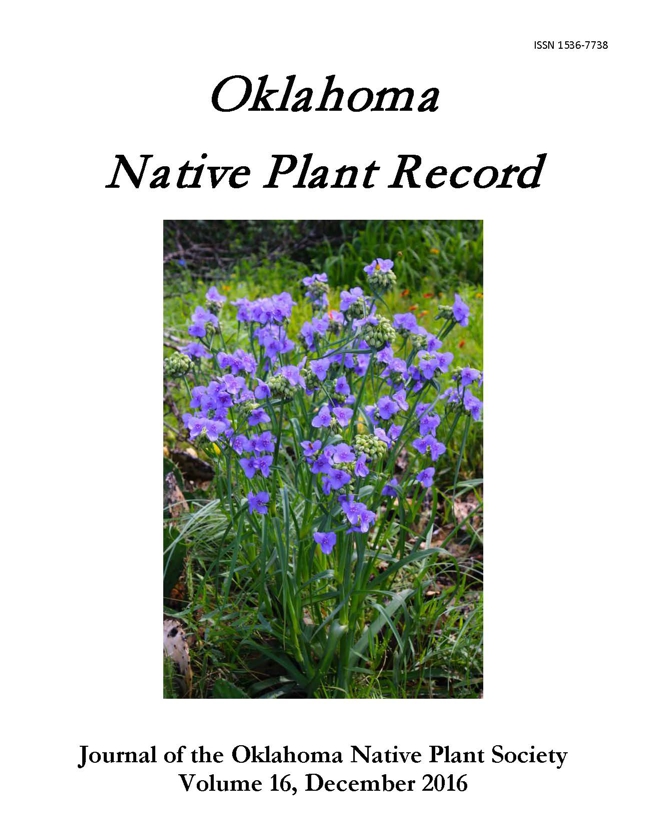Effects of Fire Severity on Habitat Recovery in a Mixed Grass Prairie Ecosystem
Main Article Content
Abstract
We assessed the recovery and current status of three mixed grass prairie sites 5 yr post burn in the Wichita Mountains Wildlife Refuge, Indiahoma, Oklahoma. These sites represent three burn histories: moderate burn, severe burn, and unburned. We used a modified point-intercept method to sample 38 habitat variables at 280 points along three transects at each site. These data were subjected to principal components analysis to assess trends in habitat structure among the sites. The first three components explained 66.6% of the variation in the dataset. Component I represents a gradient from short forbs, lichen covered rocks, and minimal disturbance to areas of tall grasses and ungulate disturbance. Component II represents a gradient from tall forbs and water disturbance to areas with woody shrubs, short herbaceous litter, and graminoid and moss ground cover. Component III represents a gradient from areas with mid-level forbs, fecal matter and herbaceous litter ground cover to areas with tall grasses and bare ground. Projections of the burn treatment sites onto principal components I–III indicate that the moderate and unburned sites cluster closely on component I but are distinct along components II and III. We interpret our results as supporting a relationship between high severity fire and more complete nutrient cycling from accumulated litter, leading initially post fire to dense grass cover followed by increasing forb cover. This increase in forage density potentially alters the grazing patterns of large herbivores, which inflicts higher levels of disturbance. Conversely, the unburned and moderate burn sites had a greater diversity of herbaceous species at lower coverage densities, perhaps resulting from reestablshiment from surviving shoots and seeds.
Article Details

This work is licensed under a Creative Commons Attribution-NonCommercial-ShareAlike 4.0 International License.
Articles (c) The Authors
Journal compilation (c) Oklahoma Native Plant Society
Except where otherwise noted, this work is licensed under a Creative Commons Attribution-NonCommercial-ShareAlike4.0 International License, (CC BY-NC-SA 4.0) https://creativecommons.org/licenses/by-nc-sa/4.0/, which permits unrestricted use, distribution, and reproduction in any medium, provided the original work is properly attributed, not used for commercial purposes, and, if transformed, the resulting work is redistributed under the same or similar license to this one.

